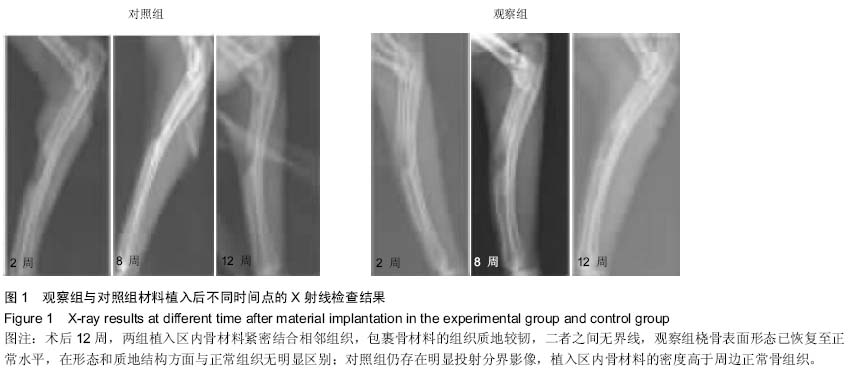| [1] 郝强,赵丽,关继奎,等.人工骨材料在骨缺损修复中的应用[J].中国组织工程研究与临床康复,2009,13(34):6745-6748.
[2] 蔡汝汝,杨云,孙珍珍,等.牡蛎壳纳米羟基磷灰石的制备与表征[J].厦门大学学报:自然科学版,2010,49(5):666-670.
[3] 李振威,谢丽丽,曹阳,等.天然牡蛎壳纳米体复合型骨材料修复桡骨缺损的研究[J].实用骨科杂志,2012,18(9):807-812.
[4] 寇冬权,林忠勤,王伟,等.牡蛎壳粉/α-半水硫酸钙复合人工骨修复兔股骨髁缺损的实验研究[J].医学研究杂志,2013,42(3): 73-76.
[5] Mututuvari TM,Harkins AL,Tran CD.Facile synthesis, characterization, and antimicrobial activity of cellulose-chitosan-hydroxyapatite composite material: A potential material for bone tissue engineering.J Biomed Mater Res A. 2013;101(11):3266-3277.
[6] 薛恩兴.天然海洋碳酸钙骨组织材料的研制及体内外相关试验研究[D].温州医学院,2007.
[7] 冯永增,彭磊,徐华梓,等.牡蛎,壳/消旋聚乳酸复合人工骨修复兔桡骨缺损的实验研究[J].浙江医学,2011,33(8):1120-1123,1126.
[8] 薛恩兴,徐华梓,彭磊,等.牡蛎壳材料的生物相容性研究[J].浙江临床医学,2007,9(2):175-176.
[9] 杨云.牡蛎壳双相磷酸钙/壳聚糖复合多孔骨修复支架材料的制备与表征[D].厦门大学,2011.
[10] 沈跃.改性半水硫酸钙复合牡蛎壳生物骨材料的制备和性能研究[D].温州医学院,2013.
[11] Vozzi G,Corallo C,Carta S,et al. Collagen-gelatin-genipin- hydroxyapatite composite scaffolds colonized by human primary osteoblasts are suitable for bone tissue engineering applications: In vitro evidences.J Biomed Mater Res A. 2014;102(5):1415-1421.
[12] Zhao J,Luo C,Han W,et al.Fabrication and properties of poly(L-lactide)/hydroxyapatite/chitosan fiber ternary composite scaffolds for bone tissue engineering.J Polym Eng.2012;32(4/5):283-289.
[13] 朱凌云,王彦平,石宗利,等.构建球磨碳酸钙/聚磷酸钙纤维/聚乳酸组织工程支架复合材料[J].中国组织工程研究与临床康复,2010,14(21):3823-3826.
[14] 陈玉枝,林舒.牡蛎壳与龙骨成分的分析[J].福建医科大学学报,1999,33(4):432-434.
[15] 薛恩兴,徐华梓,彭磊,等.牡蛎壳材料填充兔股骨骨缺损的实验研究[J].浙江创伤外科,2009,14(5):437-439.
[16] Hoppe A,Jokic B,Janackovic D,et al.Cobalt-Releasing 1393 Bioactive Glass-Derived Scaffolds for Bone Tissue Engineering Applications.ACS Appl Mater Interfaces. 2014; 6(4):2865-2877.
[17] Lee JB,Park HN,Ko WK,et al.Poly(L-lactic acid)/hydroxyapatite nanocylinders as nanofibrous structure for bone tissue engineering scaffolds.J Biomed Nanotechnol. 2013;9(3):424-429.
[18] Moshaverinia A,Chen C,Akiyama K,et al.Encapsulated dental-derived mesenchymal stem cells in an injectable and biodegradable scaffold for applications in bone tissue engineering.J Biomed Mater Res A. 2013;101(11):3285-3294.
[19] Fricain JC,Schlaubitz S,Le Visage C, et al.A nano-hydroxyapatite-Pullulan/dextran polysaccharide composite macroporous material for bone tissue engineering. Biomaterials.2013;34(12):2947-2959.
[20] 宋世锋,彭磊,王臻,等.三维多孔复合人工骨的制备及性能检测[J].中国矫形外科杂志,2009,17(12):928-930.
[21] Mount AS,Wheeler AP,Paradkar RP,et al.Hemocyte mediatedshellmineralizationintheeasternoyster.Science.2004;304(5668):297-299.
[22] 林忠勤.硫酯钙复合碳酸钙骨修复填充材料的制备与性能的研究[D].温州医学院,2011.
[23] 张伟.仿生碳酸钙纳米复合材料的可控构筑及生物相容性研究[D].华中师范大学,2012.
[24] Ravichandran RK,Sundaramurthi D,Gandhi S,et al.Bioinspired hybrid mesoporous silica-gelatin sandwich construct for bone tissue engineering.Microporous Mesoporous Mater.2014;187:53-62.
[25] 孙文晓,王敏,李晓辉,等.两种壳聚糖仿生复合材料对家兔桡骨骨缺损修复的实验研究[J].现代生物医学进展,2008,8(7): 1211-1213.
[26] Shin MY,Park JS,Jeong SI,et al.Promotion of Human Mesenchymal Stem Cell Differentiation on Bioresorbable Polycaprolactone/Biphasic Calcium Phosphate Composite Scaffolds for Bone Tissue Engineering.Biotechnol Bioprocess Eng. 2014;19(2):341-349.
[27] Kim M,Jung WK,Kim G.Bio-composites composed of a solid free-form fabricated polycaprolactone and alginate-releasing bone morphogenic protein and bone formation peptide for bone tissue regeneration.Bioprocess Biosyst Eng. 2013; 36(11):1725-1734.
[28] Simkiss K.The organic matrix of the oyster shell.Comp Biochem Physiol. 1965;16(4):427-435.
[29] 冯永增,徐华梓,彭磊,等.三维多孔牡蛎壳/消旋聚乳酸复合人工骨的研制及其相关性能的检测[J].中国生物医学工程学报,2009, 28(1):90-95.
[30] Dessì M,Borzacchiello A,Mohamed TH,et al.Novel biomimetic thermosensitive β-tricalcium phosphate/chitosan-based hydrogels for bone tissue engineering.J Biomed Mater Res A. 2013;101(10):2984-2993. |
